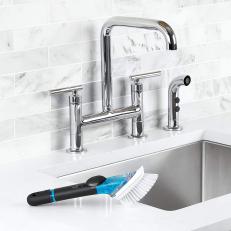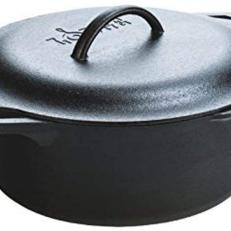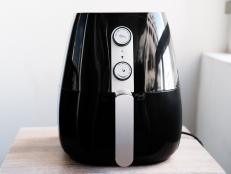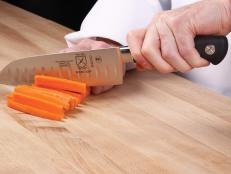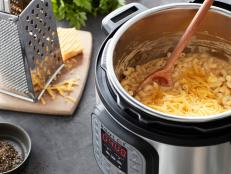How to Clean a Dutch Oven
Don't put it the dishwasher — we beg you!
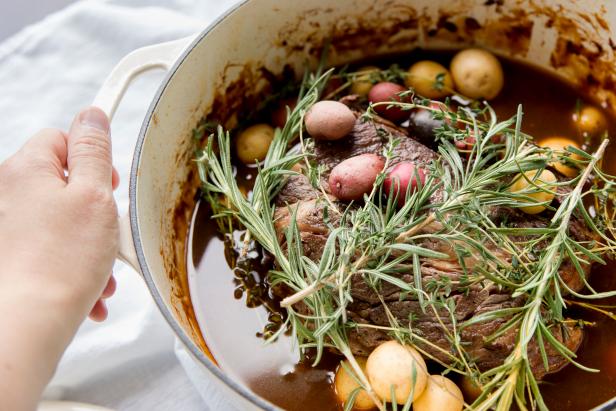
vaphotog/Getty Images
We all have a favorite pot or pan that we turn to when we aren’t making something with specific needs — it’s a pan we trust and is likely the one that looks the most used. For me, it’s a Dutch oven. I have a couple size options, but I find our 3.5-quart gets the most use since it’s typically just my partner and I cooking. Strong sear? Dutch oven. Pasta boiling? Dutch oven. Soups, braises or frying? There’s no competition. I find that when cleaning up after most of my Dutch oven projects, I only need a brush with a scraper on top, soap and water to get the job done and baking soda for tougher messes. Either way, there are a few things to consider to make sure you’re cleaning it properly.
Enameled Vs. Cast Iron Dutch Ovens: What's the Difference?
Let’s start with enameled Dutch ovens. Many Dutch ovens are made with cast iron then coated with enamel, which is the white layer that can be seen on the inside. This is the reason they’re so heavy but also such great retainers of heat. When cleaning this type of Dutch oven, the goal is to preserve this white layer, which can scratch or chip if not cared for correctly.
Next is a cast iron Dutch oven that is not coated in enamel. These can be cleaned the same way you clean normal cast iron pans, meaning the goal is to not disrupt the seasoning that you build up. When cleaning anything cast iron, it’s important to remember golden rule: no soap ever.
How to Clean Tough Messes On Enameled Dutch Ovens
Step 1: Scrub with a brush and soap. Treat the enameled Dutch oven like you would a glass plate and first try scrubbing it with warm water, soap and a scrub brush.
Step 2: Boil hot water in the Dutch oven. If scrubbing doesn't get the job done, add about a half-inch of water, cover the pot and boil for about five minutes. The hope is that the boil will disrupt some of the particles on the bottom of the pot, and the steam will loosen everything on the sides.
Step 3: Let the pot soak. Let the Dutch oven soak with the hot water is cool enough to handle.
Step 4: Add soapy water to the hot water and scrub. Use brushes versus rough sponges for this because you can be aggressive with less risk of scratching. That rough side of the sponge won’t peel the coating off right away, but over time it will wear down and lose its smooth texture.
Step 5: Make a baking soda paste. If you still need more elbow grease after step 4, make a baking soda slurry from 1/3 cup of baking soda and just enough water to turn it into a paste. Dump the hot water from the Dutch oven, spread the slurry on the crusty parts of the Dutch oven and wait for the slurry to harden.
Step 6: Pour boiling water over the baking soda slurry. Slowly pour boiling water over the baking soda crust. The residue should lift off as the baking soda does, sticking to the paste rather than the walls of the pot. You can repeat the baking soda and boiling technique until everything is off the bottom, though it will rarely take this much effort.
How to Clean Tough Messes on Cast Iron Dutch Ovens
For cast iron, you’ll need water, a brush, tongs, vegetable shortening, a rag and maybe some salt, and I highly recommend investing in a cast iron brush if you use your cast iron regularly. The bristles are made from a tougher material than regular dish brushes, so they’ll last longer.
Step 1: Try rinsing and wiping it down. In a perfect world, your pan will just require a quick rinse and wipe-down with a rag to get excess food bits off. However, this is not always the case.
Step 2: Boil hot water in the Dutch oven. If the food is tougher, start by softening it with a little bit of hot water. Add water, cover and let it boil for about five minutes.
Step 3: Scrape the sides down with a cast iron brush and kosher salt. Brush and scrape with your designated, soap-less cast iron brush. If something is still stuck, put a little mound of kosher salt on it and try to use that to scrub with a rag then rinse again. Dump out the water and wipe the clean inside dry.
Step 4: Heat the cast iron Dutch oven to dry it. The next step is almost as essential as the no soap rule — you need to heat the cast iron Dutch oven again to make sure you’ve removed all moisture. Just how soap is the enemy of your seasoning, water is the enemy of metal, and not drying out your cast iron will result in rust. Trust us, you don’t want to skip this step.
Step 5: Spread a thin layer of oil on the inside. Next, with a small rag (hold with tongs since the cast iron will still be hot), spread the thinnest possible layer of vegetable shortening evenly across the inside of the cast iron. Place back on high heat and let it cook into the skillet for three to five minutes.
What to Avoid When Washing Dutch Ovens
If you’re tempted to put your Dutch oven in the dishwasher, I beg you not to. It seems obvious for cast iron Dutch ovens since dishwashers use soap, but dishwashers are off limits for enameled Dutch ovens, too. They can take the dishwasher heat, but there is risk that the extended humidity of a dishwasher will wear down the enamel over time and increase the risk of chipping. Additionally, dishwashers can be violent places! Dishes and utensils can move around during the wash cycle, which puts your enamel at risk of getting scratched.
The good news is that the care of these kitchen staples isn’t difficult if you know the right steps to take. Heavy is the Dutch oven that wears the crown, but the cleaning doesn’t have to be a heavy lift.
Related Links:























